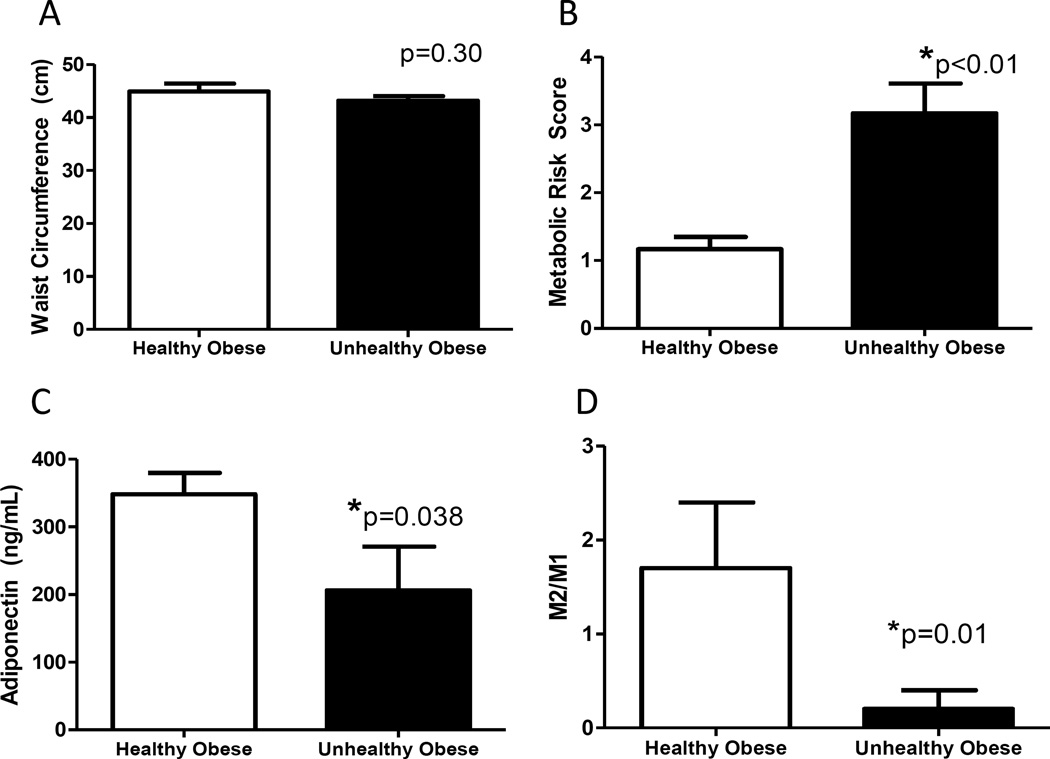Figure 2.
Characteristics of metabolically healthy and unhealthy obese monkeys selected randomly from the subset of the population matched on age and BW for fat biopsy (additional data in Table 2). Despite comparable age and waist circumferences (Panel A), monkeys selected were unhealthy as defined by high metabolic syndrome risk scores (Panel B), which was accompanied by reductions in circulating adiponectin concentrations (Panel C). Panel D: Metabolically unhealthy obese monkeys had shifts in the classically and alternatively activated macrophage populations (M1 and M2 respectively) in subcutaneous fat, with the unhealthy monkeys demonstrating a more pro-inflammatory ratio (n=6/group). All panels show group average with standard error of the means.

